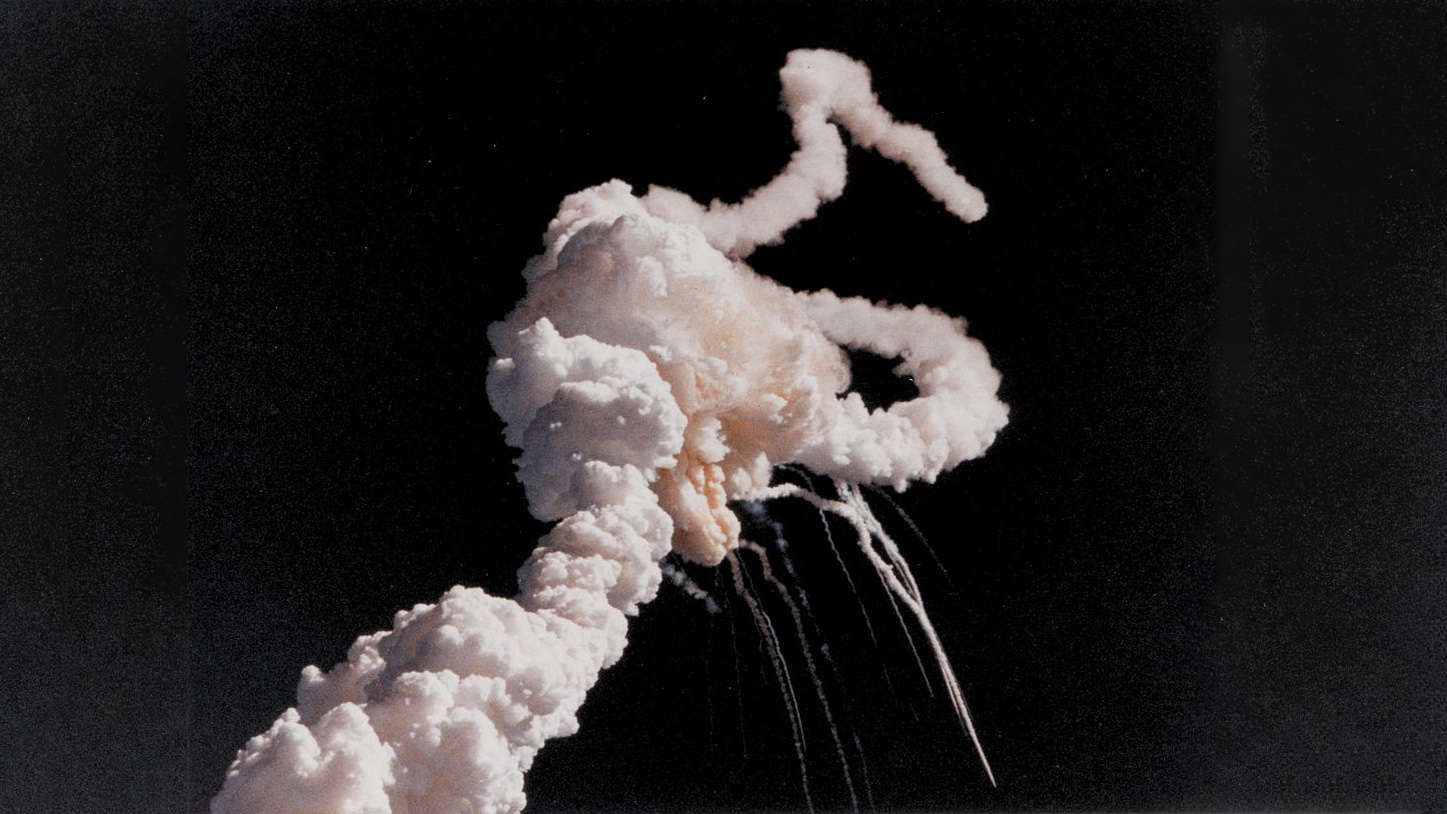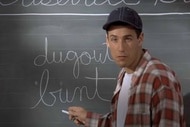Create a free profile to get unlimited access to exclusive videos, sweepstakes, and more!
Netflix's Challenger documentary is a fascinating exploration of guilt

If you were alive in 1986, you remember it. Even if you were born years or decades later, chances are you know the image — a devastating explosion set against a clear, unusually cold Florida sky, with a thick white cloud that forks in two as rockets and debris fall from what was once the Space Shuttle Challenger. The moment is infamous, but Netflix’s new four-part documentary series Challenger: The Final Flight, goes behind the disaster that killed all seven astronauts aboard, including schoolteacher Christa McAuliffe. It’s about the simmering failings of the Space Shuttle program and the bureaucracy and momentum that made such a catastrophe inevitable. It is also, fascinatingly, a documentary about guilt — and in a quietly perverse way, the limitations of guilt when faced with that same tragic momentum.
The Final Flight begins with the Jan. 28, 1986 launch, cutting to the opening credits just after the explosion, but then it goes back in time to the conception of the Space Shuttle, which was conceived of as a means to make travel to space safe, easy, and borderline routine. Space would be for everyone, the Shuttle promised, but it soon became apparent that wasn’t the case. The Shuttle was plagued by problems, some of which were dangerous, while others were lesser delays that still poked a hole in the vision NASA was selling. This branding issue, the documentary explains with incredible archival footage and interviews with key figures from NASA and space engineering history, is what led to McAuliffe’s presence on Challenger, which was set to blast off into space with two rockets that had a clearly documented, potentially fatal flaw. The show had to go on.
Challenger exploded due to an engineering flaw in the O-rings that were meant to prevent the burning, pressurized gas within the two rockets from bursting through, but the documentary series humanizes this mechanical flaw and its very human cost. Interviews with the deceased astronauts’ loved ones — especially those with June Scobee Rogers, the widow of Challenger's commander Richard “Dick” Scobee — put the loss of the crew in devastating, emotional terms. Peter Billingsly, a former child actor best known for A Christmas Story (and more recently a surprising turn in Spider-Man: Far From Home) was NASA’s “kid liaison” for the mission. He was 14 years old when he watched the Challenger explode, and given that there was talk of one day sending the first kid into space, Billingsly almost seems to have some survivor’s guilt.
Survivor's guilt is a common theme among many of the documentary’s subjects, but it’s in conversations with the NASA executives who OK'ed the launch and the engineers who helped build the flawed rockets that The Final Flight really shows the cost of guilt. From the moment we first see Brian Russell, an engineer for contractor Morton Thiokol’s solid rocket booster program, you can tell this is a haunted man, even today. Russell wasn’t in a high enough position to call any shots, but he still kicks himself for not breaking protocol, for not doing more to raise red flags.
The documentary is so drenched in guilt that the few subjects who are unrepentant seem downright ghoulish. William R. Lucas, the director of the Marshall Space Flight Center at the time of the Challenger disaster, states that he still doesn’t think he did anything wrong. To him, it’s the price of progress, and it’s jaw-dropping when he compares the deaths of the Challenger crew to his “forebearers” who didn’t all survive when they “came across the Appalachian mountains in a wagon with horses.” Lawrence Mulloy, project director for the Marshall Space Flight Center and the man arguably the most directly responsible for pressuring engineers at Morton Thiokol to approve of a risky cold-weather launch despite their concerns about the O-rings, seems to carry an immense weight of guilt. He’s The Final Flight’s clearest “villain,” though he appears so defeated by history that it’s hard to feel animosity toward him as a viewer. “I feel I was to blame,” Mulloy says in the final episode. “But, I felt no guilt.”
Mulloy’s last sentence is jarring. It’s unclear from the documentary if he means that he still feels no guilt, or if that was just his feeling at the time. If it’s the former, then you get the sense that he may be lying to himself. His handling of guilt — or lack thereof — is indicative of a larger theme. Regret can only go so far before self-preservation and routine kick back in.
The Final Flight is informative and profoundly moving, but it becomes revelatory at the very end of the final episode, in a way that’s perhaps even more subversive than the documentary itself is willing to admit. Episode 4 focuses on the aftermath of the disaster, including the Rogers Commission that was tasked with identifying the cause of the explosion. Then, at the end, the music starts to swell again. Nearly three years after the disaster, NASA launched the Shuttle Discovery, the first since Challenger’s destruction. The problems had been solved, and America was back in space. It’s framed as a triumphant moment, and indeed some of the NASA and engineering talking heads who were guilt-struck and grieving earlier in the documentary seem to view it as an uplifting continuation of America’s space story.
But, just before the credits roll, a few slides of text tell of what would happen next. NASA flew 86 more successful Shuttle missions over the next 15 years until Columbia broke apart on re-entry on Feb. 1, 2003. “An investigation revealed a similar failure to fix a well-documented issue,” the text flatly explains. That’s it in a sentence, but the story of the Columbia disaster could (and should) fill out its own four-episode documentary series. Instead, The Final Flight tacks it on as a necessary, deliberately un-elaborated epilogue.
The implication, intentional or not, is that it doesn’t matter how guilt-struck these people feel because the narrative of progress — and the momentum that goes along with it — will push events toward a seemingly inevitable future. The destruction of the Challenger weighs heavily on almost all of the subjects in the documentary, but the ending reveals that they, for the most part, can’t help but put their grief and their guilt inside an optimistic, forward-looking story about how the world works. The Final Flight itself does this, laying out a four-hour case of the deep, inherently flawed way NASA worked before then ending with hopeful fanfare over the next successful Shuttle launch. We all need a happy ending, even if the story isn’t happy or, in fact, over. The deliberately brief mention of Columbia’s demise is a tacit admission that Challenger’s story didn’t end on Jan. 28, 1986, the date of the disaster, or on Sept. 29, 1988, when Discovery saw America return to space. The drive to always push forward, and the complacency that can come with that, will always shape the way we do and view things. And, sometimes, lead to another tragedy.
All four episodes of Challenger: The Final Flight are now streaming on Netflix.
The views and opinions expressed in this article are the author's, and do not necessarily reflect those of SYFY WIRE, SYFY, or NBCUniversal.















